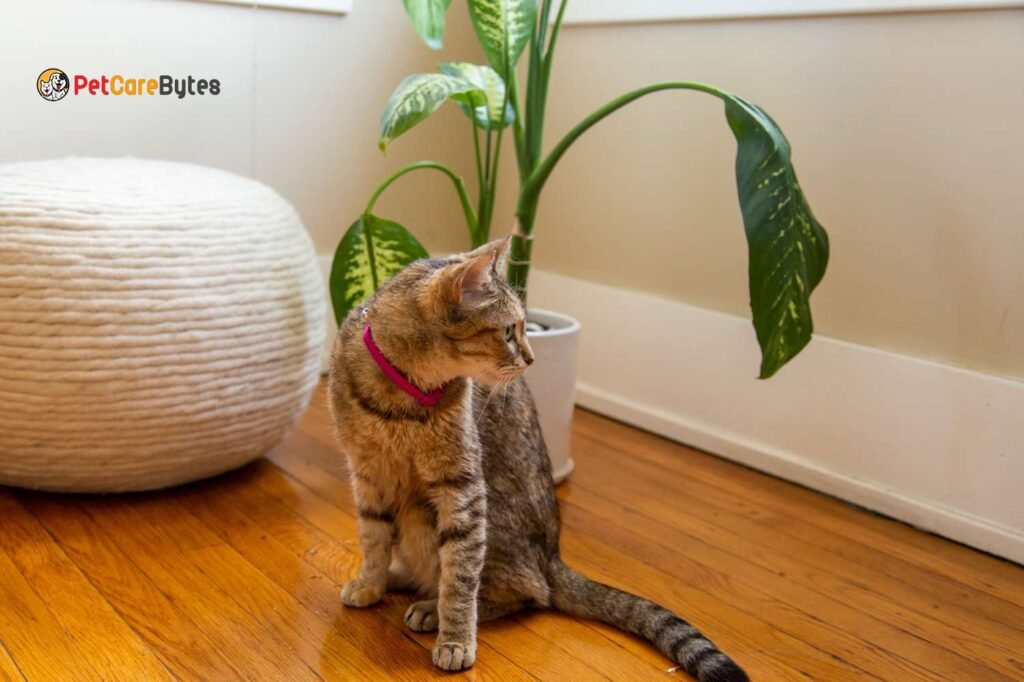In recent years, the relationship between pet owners and their feline companions has evolved into something truly special. Cats, with their unique personalities and independent nature, have become cherished members of countless households. As we embark on the journey of pet ownership in 2024, it’s essential to explore comprehensive and up-to-date pet care tips tailored specifically for our beloved cats.
Read More: Aural Hematoma in Cats
Contents
- 1 Creating a Comfortable Environment
- 2 Nutritional Guidelines
- 3 Regular Veterinary Check-ups
- 4 Grooming Tips
- 5 Interactive Playtime
- 6 Understanding Cat Behavior
- 7 Training Techniques
- 8 Handling Emergencies
- 9 Introducing New Pets
- 10 Traveling with Your Cat
- 11 Dealing with Common Health Issues
- 12 DIY Cat Toys and Enrichment Activities
- 13 Seasonal Pet Care Tips
- 14 Conclusion
- 15 FAQs
Creating a Comfortable Environment

Cats thrive in a comfortable and secure environment. The first step in ensuring their well-being is to provide them with a cozy bed and strategically placed resting spots around the house. Cats appreciate cleanliness, so regular cleaning of their living space is crucial for their physical and mental health.
Nutritional Guidelines
A well-balanced diet is the cornerstone of your cat’s health. Collaborate with your veterinarian to choose the right cat food based on factors such as age, breed, and any specific health concerns. Portion control is vital to prevent obesity and related health issues.
Regular Veterinary Check-ups
Routine veterinary visits are not just for emergencies but are proactive steps towards maintaining your cat’s health. Work closely with your vet to establish a schedule for vaccinations, screenings, and preventive care. Being aware of common health issues specific to cats is also beneficial.
Grooming Tips
Grooming is more than just aesthetics; it’s an essential aspect of your cat’s overall well-being. Regular brushing helps maintain a healthy coat, especially for long-haired breeds. Understanding your cat’s grooming needs and addressing them promptly contributes to their comfort and happiness.
Interactive Playtime
Cats are natural hunters, and interactive play is crucial for their mental and physical stimulation. Invest in toys that mimic prey and set aside dedicated playtime each day to keep your cat engaged and happy.
Understanding Cat Behavior
Deciphering your cat’s body language is akin to unlocking a unique communication code. Tail movements, ear positions, and vocalizations all convey specific messages. Addressing behavioral issues with patience and positive reinforcement strengthens the bond between you and your cat.
Training Techniques

Contrary to popular belief, cats are trainable. Positive reinforcement, such as treats and praise, goes a long way in encouraging desired behaviors. Consistency is key, and with patience, you can teach your cat basic commands and habits.
Handling Emergencies
Preparation is essential for handling emergencies. Assemble a cat first-aid kit that includes items like bandages, antiseptic wipes, and your vet’s contact information. Recognizing signs that require immediate attention ensures prompt care in critical situations.
Introducing New Pets
Expanding your furry family requires careful consideration. Introduce a new pet gradually, allowing your cat to acclimate to the new addition. Monitoring their interactions and providing a harmonious environment helps prevent stress and conflict.
Traveling with Your Cat
Traveling with cats can be challenging, but with careful planning, it can be a positive experience. Acclimate your cat to the carrier, bring familiar items, and plan rest stops for longer journeys. Ensuring their comfort during travel is crucial for their well-being.
Dealing with Common Health Issues
Recognizing symptoms of common health issues in cats is crucial for early intervention. While some problems can be addressed at home with simple remedies, consulting a veterinarian is essential for accurate diagnosis and treatment.
DIY Cat Toys and Enrichment Activities
Entertaining your cat doesn’t have to be expensive. Discover budget-friendly DIY toys and activities that stimulate your cat’s mind and provide hours of entertainment. From simple cardboard boxes to homemade puzzles, there are plenty of creative options.
Seasonal Pet Care Tips

Adapting your pet care routine to different seasons is essential. Protect your cat from extreme temperatures, hazards associated with specific seasons, and ensure they remain comfortable year-round. Whether it’s providing extra warmth in winter or keeping them cool in summer, seasonal adjustments contribute to their well-being.
Conclusion
Providing optimal care for your cat involves a holistic approach. By addressing their physical, mental, and emotional needs through the outlined tips, you not only enhance their quality of life but also strengthen the unique bond you share.
Read More: Stomatitis in Cats: Everything You Should Know
FAQs
- How often should I groom my cat? Grooming frequency depends on your cat’s breed and coat length. Long-haired breeds may require daily brushing, while short-haired cats can be brushed once a week.
- What are the signs of a healthy cat? A healthy cat has a shiny coat, clear eyes, and is active and playful. Regular eating, drinking, and using the litter box are also positive signs.
- Can I train my older cat? Yes, cats of all ages can be trained. While younger cats may learn faster, older cats can still pick up new behaviors with patience and positive reinforcement.
- How do I introduce a new cat to my existing pet? Introduce them gradually, allowing them to sniff each other through a cracked door. Gradually increase their exposure, always monitoring their interactions.
- What should I include in a cat first-aid kit? A cat first-aid kit should include bandages, antiseptic wipes, tweezers, and your vet’s contact information. Customize it based on your cat’s specific needs.




















